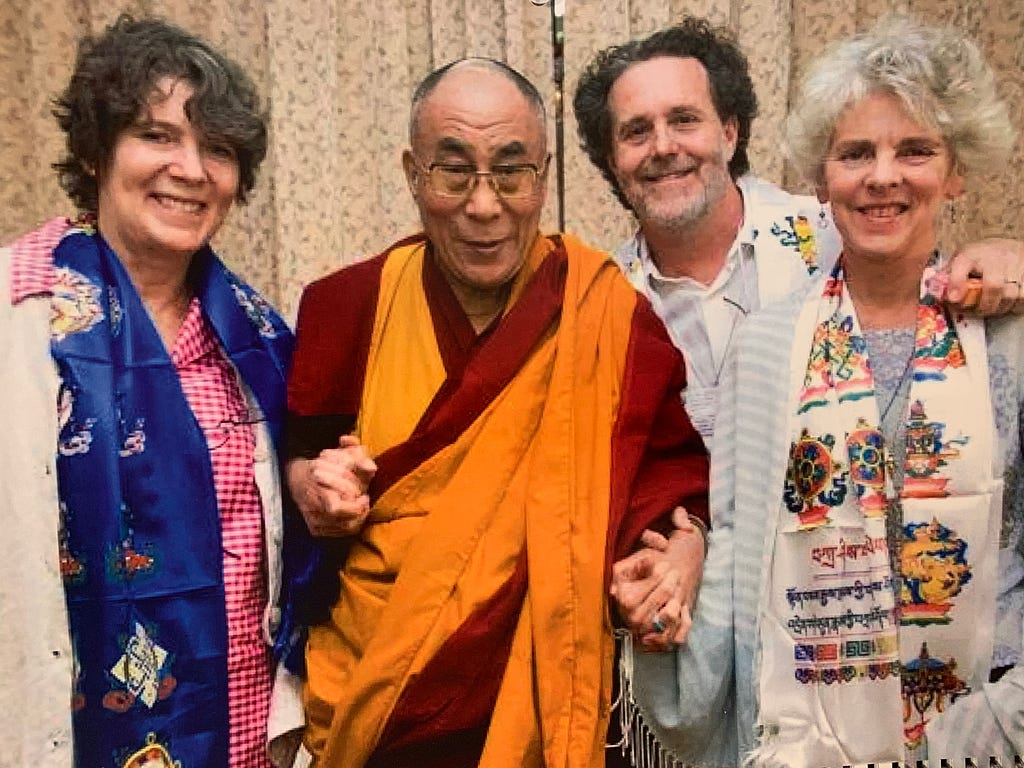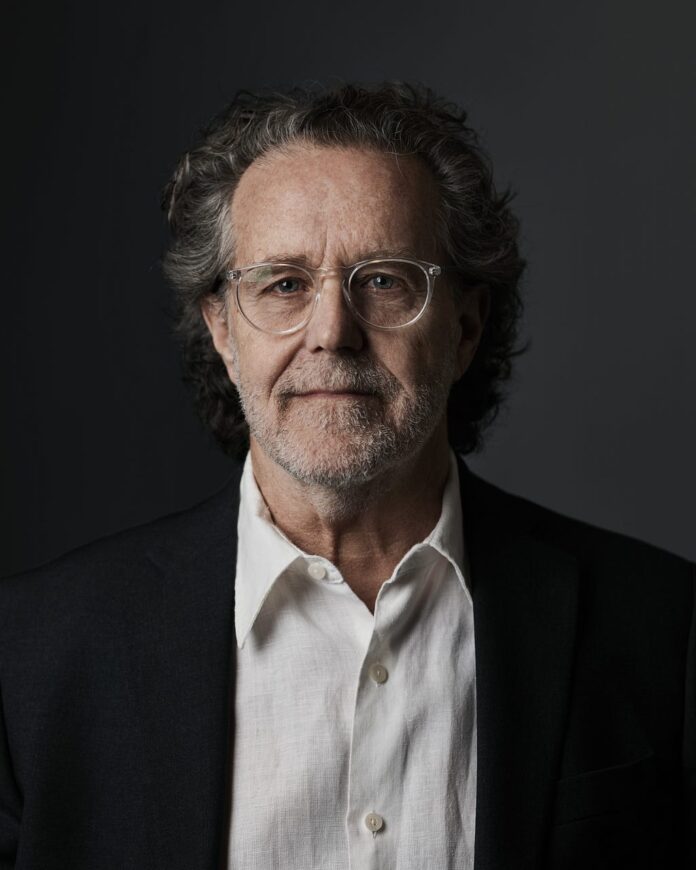Impactful Communication: Chuck Wisner Of Wisner Consulting On 5 Essential Techniques for Becoming an Effective Communicator
An Interview With Athalia Monae
Self-awareness. We grow up learning to communicate from our families and cultures. Most of our communication patterns we adopted unconsciously. Some serve us, but others influence how we are triggered into automatic reactions. Self-awareness is a journey of exploring our patterns non-judgmentally
In an age dominated by digital communication, the power of articulate and effective verbal communication cannot be understated. Whether it’s delivering a keynote address, leading a team meeting, or engaging in a one-on-one conversation, impactful speaking can open doors, inspire change, and create lasting impressions. But what truly sets apart an effective communicator? What techniques and nuances elevate a speech from mundane to memorable? As part of this series, we had the pleasure of interviewing Chuck Wisner.
Chuck is the author of The Art of Conscious Conversations, Transforming How We Talk, Listen, and Interact. He is a coach and speaker focusing on the lost art of conversation. His theories of the why, how, and what of conversations deeply dive into their DNA and introduce new tools and practices that transform how we can think about and be in them more successfully.
He has spent thirty years as a trusted advisor to leaders, their teams, and their families in high-profile companies, including Google, Rivian, Apple, Tesla, DTE Energy, Harvard Business School, Ford, and Chrysler.
Before starting Wisner Consulting, Chuck was a senior affiliated mediator with the Harvard Mediation Program, certified in the Mastering the Art of Professional Coaching, and a coach affiliated with MIT’s Center for Organizational Learning.
He lives north of Boston with his wife of 41 years and two sons living out their creative dreams in NY City.
Thank you so much for joining us in this interview series. Before we dive into our discussion about communication, our readers would love to “get to know you” a bit better. Can you share with us the backstory about what brought you to your specific career path?
I was an architect in Boston for twenty years, and the last ten years I was a partner in a medium-sized firm in Cambridge, Ma. As we grew, one of the partners’ alcoholism became a serious problem for us, our staff, and our clients.
Glueless about how to deal with this, we hired an advisor to guide us through the mess. Her name was Linda Reid. What and how she work with us individually and as a group was very successful. I’ve always been interested in psychology and spirituality and what she did resonated with me and seemed magical. “How did she do that?” Long story short, I was curious and captivated. I spent four years retooling myself and and with two young children in tow and my wife’s blessing, I gave up my partnership and started a new career. Weeks later I was invited to be a coach in an MIT program, Transformational Leadership for the 21st Century. Twenty five years later, I was inspired to write my book, The Art of Conscious Conversations.
Can you share the most interesting story that happened to you since you started your career?
The best and luckiest thing for me was that connection with the MIT program.
Fred Kofman led the effort and Leslie Pollitt was a colleague. In the 4 years that we traveled the country working with Fortune 200 Companies, I met many interesting people. Some were part of the program, like David Whyte, the poet, and Peter Senge, the author of The Fifth Discipline. Others were wonderful clients from corporation that went on a soul searching exploration which included meditation, emotional intelligence, and the ontology of language.
You are a successful business leader. Which three character traits do you think were most instrumental to your success? Can you please share a story or example for each?
- Curiosity. This characteristic seems natural to me. It was what allowed me to listen to the pull of the new career (a scary transition). And while coaching and teaching it kept me in learning mode, always willing expand my tool box to apply to myself and my clients
- Humility. This one is a lifelong practice. As a new practitioner, I got knock down a couple pegs which served me well as I began to appreciate the power of humility especially for leadership.
- Passion. This work spoke to me on many levels. Inherently, as I mentioned above, the breadth of the work was broad. It included self-awareness, relationship dynamics, communication excellence, and systems thinking.
Over the years my passion for those subjects never waned. There is no end to those explorations.
Ok, thank you for that. Let’s now jump to the primary focus of our interview. Let’s begin with a basic definition so that we are all on the same page. How would you define an “Effective Communicator?” What are the characteristics of an effective communicator?
Self-Awareness
Open mind and open heart
A productive collaborator- balancing advocacy and inquiry
Active listening
How can one tailor their communication style to different audiences or situations?
Social intelligence — reading the room
Inquire first to learn about your audience
Willingness to learn in real time and adjust accordingly
Can you provide an example of a time when you had to adapt your communication style to reach a particular audience successfully?
Yes, in general I had to learn to set aside my academic knowledge and use real life examples to help an audience understand a concept or practice
How do you handle difficult or sensitive conversations while maintaining open and effective communication?
Emotional intelligence is key. Managing ones triggers in real time.
Also communicating with an open hand instead of a closed fist.
In your experience, how does storytelling play a role in impactful speaking? Why do you think stories are effective in communication?
We humans live through stories. Some serve us well and others are harmful.
A story helps an audience connect and relate to the ideas being presented. Stories are also a way to show vulnerability and humility and demonstrate practices to work through difficult conversations.

What are your “5 Essential Techniques for Becoming an Effective Communicator”?
1 . Self-awareness. We grow up learning to communicate from our families and cultures. Most of our communication patterns we adopted unconsciously. Some serve us, but others influence how we are triggered into automatic reactions. Self-awareness is a journey of exploring our patterns non-judgmentally
2 . Laying down defensiveness. Our egos love our stories and perspectives on life. And we are trained from an early age to have answers. Being nondefensive means being willing to say, “I don’t have all the answers.” I have worked with many leaders who had to become “learners” rather than “knowers” to create the kind of team collaboration and psychological safety in their organizations.
3 . Fall in love with questions. We are trained to advocate for our position. But closed advocacy closes down conversations rather than opening them. In most leadership positions, holding back on presenting your perspective/answer and asking to hear multiple perspectives is where mutual learning and creative thinking flourish.
4 . Trust your intuition. We are all trained to be good, rational, and linear thinkers. Society cherishes the left hemisphere of our brain. But is was Einstein who said,
The left hemisphere is a servant to the right hemisphere. The right is where our big picture vantage points, intuition, wonder, and creativity live.
5 . Slow down your decision-making process. Decisions are made in commitment conversations, the action conversation. Unfortunately, we love our stories we love taking action. But in our rush to a decision, productive collaboration and open creative conversations are overlooked. I call this the conversational by-pass.
Slowing down means consciously creating time to hear multiple perspectives, learn from them, and explore possible solutions. That practice alone create better vetted and wiser decisions.
How do you integrate non-verbal cues into your communication? Can you provide an example of its importance?
Our bodies don’t lie. A great way to integrate nonverbal cues to to do the work
to align your inner dialogue with the words we speak. If our inner critic our judge is running in the background of our mind while we are being polite with our words, our body will broadcast that gap. It is a great way to check for and practice sincerity and integrity. Of course, the old standbys are important — eye contact, relaxed body, open hand gestures. But fundamentally, this is very personal work to explore and practice.
How has digital communication changed the way you convey your messages? Are there any specific challenges or advantages you’ve encountered?
Digital communication lays multiple traps. It is great for connecting and quick simple coordination, but all the visual cues and tone of voice, and moods are not available. The challenge I worked on was to keep digital communication brief and concise and requesting a call or zoom meeting for more complex or demanding interactions.
Public speaking is a common fear. What techniques or strategies do you recommend to manage and overcome stage fright?
The talk isn’t about you. It is about the audience. Minimize your fear of acceptance and focus on good material that engages the audience.
Also, prepare privately to create the right mood and attitude.
What additional resources do you recommend for individuals looking to improve communication skills?
There are so many good communication resources. Keep reading and experimenting on what works for you. Books on emotional intelligence and self-awareness are the best place to start. Another crucial practice is being nonjudgmental of yourself. This work is a lifelong practice.
You are a person of great influence. If you could start a movement that would bring the most good to the most people, what would that be? You never know what your idea can trigger. 🙂
I would start a movement on Conscious conversations. We live so much on autopilot, and conversations are the one universal tool that humanity shares.
Waking up in conversation.
How can our readers further follow you online?
Chuckwisner.com
LinkedIn and Instagram — Chuck_Wisner
Thank you for the time you spent sharing these fantastic insights. We wish you only continued success in your great work!
Impactful Communication: Chuck Wisner Of Wisner Consulting On 5 Essential Techniques for Becoming… was originally published in Authority Magazine on Medium, where people are continuing the conversation by highlighting and responding to this story.


